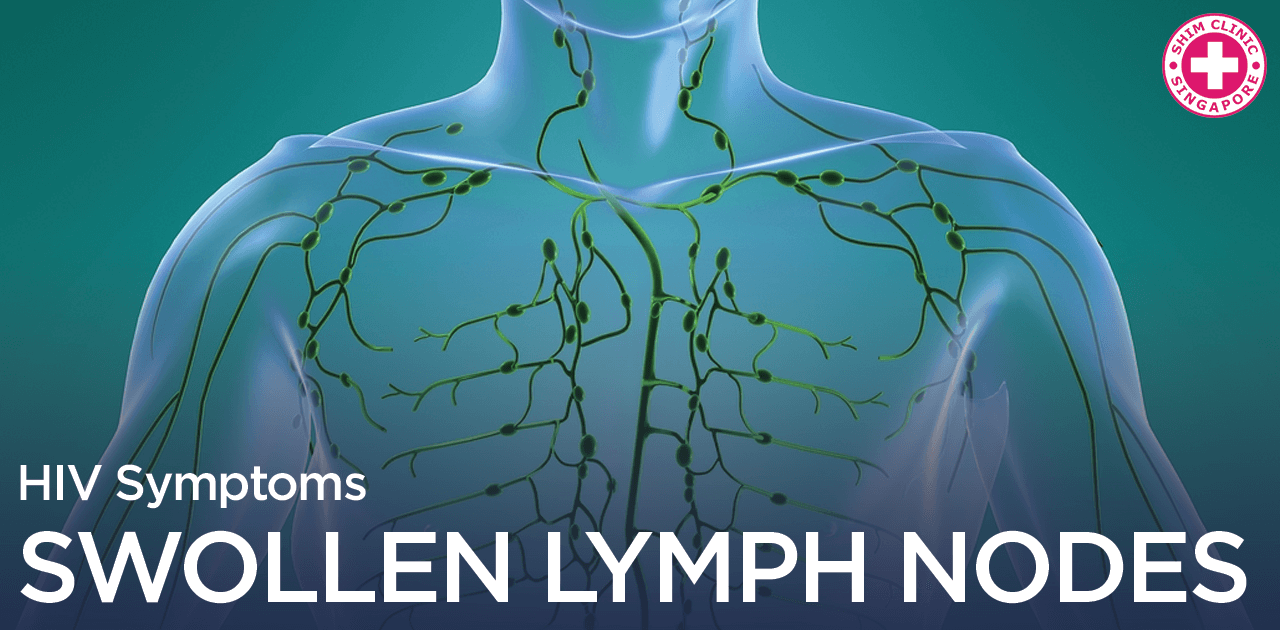HIV Swollen Lymph Nodes Singapore | Shim Clinic
| Help me about HIV Swollen Lymph Nodes ! |

| Permalink: https://shimclinic.sg/hiv-swollen-lymph-nodes |
Lymph nodes are small organs where immune cells multiply in order to fight an infection. During an infection, the lymph nodes swell, and may be felt below the skin as small bumps. Swollen lymph nodes can occur during the early phase of HIV infection.
Lymph nodes are small organs attached to the lymphatic system, which gathers up excess fluid from the body’s tissues to return it to the circulation. Lymph nodes are immune organs. Inside of lymph nodes, the white blood cells, which are the cells that fight infection, multiply in response to an infection. This causes swollen lymph nodes, which are medically known as lymphadenitis. These can often be felt below the skin as small bumps, most commonly in the neck, armpit, and/or groin. Many people refer to them as “swollen glands” or “enlarged glands.”
In the early phase of HIV infection (known as acute HIV infection), the body generates a massive immune response to the virus. This can result in swollen lymph nodes throughout the body. In some cases, there may be some soreness or tenderness of the swollen lymph nodes, which some people refer to as “sore glands.” Often, other flu-like symptoms occur along with this lymphadenitis, including fever, rash, and headache. However, the swollen lymph nodes may be the only symptom of acute HIV infection. Symptoms begin 2 to 4 weeks after the exposure, and can last for a few weeks.
Later in the course of the infection, HIV damages the immune cells, so you may not feel swollen lymph nodes in response to an infection because there won’t be an effective immune response. If the acute HIV infection is detected and HIV is treated early, it can often be prevented from getting to this point.
- Lymph nodes are small organs where immune cells go to multiply, allowing them to respond to an infection. When this happens, they will swell.
- Swollen lymph nodes can often be felt below the skin as small bumps. They may be sore or tender.
- Swollen lymph nodes throughout the body may be a sign of the first phase of HIV infection, known as acute HIV infection. Other flu-like symptoms are also common.
- Having swollen lymph nodes doesn’t prove that you have HIV. You need an HIV test.
- If you have an exposure to HIV, you may be able to take HIV PEP, which is a regimen of medications that can decrease the chances of developing an HIV infection. It must be started within 72 hours of the exposure to be effective.
Having lymphadenitis and other HIV symptoms doesn’t prove that you have HIV. There are other possible causes of these symptoms, so you need an HIV test to find out whether HIV is the cause. To get a confidential HIV test, you can go to an STD clinic. Discuss any potential HIV symptoms with your doctor, as well as any possible exposures to HIV, such as a condom that slipped or broke during sex.
If you have an exposure to HIV, there is a medication regimen called HIV PEP that can help to prevent you from developing an HIV infection. However, it must be started within 72 hours of the exposure, so if you wait until you have HIV symptoms, then it will be too late. If you think that you may have been exposed to HIV, visit an STD clinic as soon as possible. Every hour counts, because the effectiveness of HIV PEP decreases over time.
Sources:
Mayo Clinic. “STD symptoms: Common STDs and their symptoms.” Mayo Clinic. Published 18 Mar 2015. Accessed 20 Jul 2016. http://www.mayoclinic.org/std-symptoms/art-20047081
Centers for Disease Control and Prevention. “Screening Recommendations Referenced in Treatment Guidelines and Original Recommendation Sources.” Centers for Disease Control and Prevention. Published 04 Jun 2015. Accessed 20 Jul 2016. http://www.cdc.gov/std/tg2015/screening-recommendations.htm
Centers for Disease Control and Prevention. “HIV/AIDS.” Centers for Disease Control and Prevention. Published 05 Jul 2016. Accessed 27 Jul 2016. http://www.cdc.gov/hiv/
Centers for Disease Control and Prevention. “HIV Basics – Testing.” Centers for Disease Control and Prevention. Published 12 Jul 2016. Accessed 20 Jul 2016. http://www.cdc.gov/hiv/basics/testing.html
U.S. Department of Health & Human Services. “Post-Exposure Prophylaxis (PEP).” AIDS.gov. Published 21 Sep 2015. Accessed 20 Jul 2016. https://www.aids.gov/hiv-aids-basics/prevention/reduce-your-risk/post-exposure-prophylaxis/
| Timeline | HIV | STD | Pregnancy |
|---|---|---|---|
| Before exposure | |||
| Contraception (females only) | |||
| HIV PrEP (pre-exposure prophylaxis) - Stop HIV infection before exposure | STD vaccine: - Hepatitis vaccine - HPV vaccine | ||
| STD / HIV exposure | |||
| 0-72 hours | HIV PEP (post-exposure prophylaxis) - Stop HIV infection after exposure | STD testing * - Screening test - to look for asymptomatic infections - from previous exposures | Emergency contraception with the morning-after pill (females only) |
| 2 weeks | HIV DNA Test | ||
| 1 month | HIV 4th Generation Test - SD Bioline HIV Ag/Ab Combo - Fingerprick blood sampling. - 20 minutes to results | ||
| 3 months | HIV 3rd Generation Test - OraQuick® HIV-1/2 Antibody - Oral fluid or - Fingerprick blood sampling. - 20 minutes to results | STD testing * - Full & comprehensive - diagnostic test - to look for current infections | |
| Watch for | HIV Symptoms | STD Symptoms | |
| If infected | HIV Treatment | STD Treatment | Abortion |
References